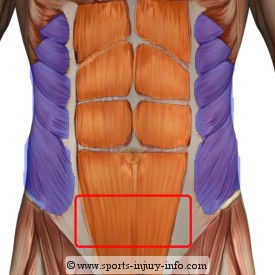Core Exercises

The importance of core strength and abdominal training is not completely overrated. It is a key component to any type of sports injury rehab program. There are so many different core exercises out there, it can get very confusing.
Lets take a look at why the core is so important in rehab and in sports performance...
Why The Core Is So Important?
When I talk to my patients about the importance of core strength, I always us the analogy of building a house. If you build a house with a sturdy foundation, then you can add two or three stories without worrying about the house being stable. If you build the house on a poor foundation, then each story becomes progressively less stable.The body is the same way. Everything is connected, and the farther away from the core you get, the less stable joints will be. If you have a strong and stable core, then you have more stability in the joints of the arms and legs.
That is the simple explanation...
How Core Stabilization Works
The abdominal muscles are the primary stabilizers of the core. With this said, not all abdominals are created equal when it comes to stabilizing the body. The lower abdominals are the important muscles for core stability. These are not the "six-pack" abs that you think about.
The problem with most athletes when it comes to core stability is that they do not properly target the lower abdominals. People focus on the "six-pack" abs, and forget the stabilizing transverse abdominus. And so the hundreds of crunches that are done with their abdominal training program do little to help improve their athletic performance.
The transverse abdominals are stabilizing muscles. This means that when they contract, they do not produce movement of a joint, but rather they tighten everything down and prevent movement. The rectus abdominus and obliques produce movement of the trunk, like a crunch or twist.
In
order to target the core for stability, you have to engage the lower
abdominals in an isometric or stabilizing contraction.
It Is Not About Looks
While everyone I know would love to have awesome six pack abs, this is really not important in improving athletic performance, or in sports injury rehab. The key is learning how to use your lower abdominal muscles to improve your stability. It will give you greater power, and work to prevent injury in the long run.So how do you get a strong and stable core. Through targeted core exercises that focus on stabilizing the trunk, and then performing other movements with your legs and arms. Remember, it all starts with a stable base.
Types of Core Exercises
The abdominal crunch is the simplest of exercises for training the core. There are hundreds of variations on the crunch, from simple sit ups, to specialized abdominal equipement. Remember though, that crunches don't necessarily target the stabilizing core muscles.I
like to have my patients perform fitness ball crunches if they are
going to be doing this type of exercise. Fitness balls allow for a
greater range of motion, and require stability in not just the core,
but also the hips and low back.
Foam rollers can be
used for abdominal training, and they can also have lots of different
variations. Using medicine balls for abdominal exercises is also
another great way to target the core.Push ups and planks are two other great core exercises that are often overlooked. If done correctly, the push up is an excellent ab exercise, and is a great way to improve functional stability.








